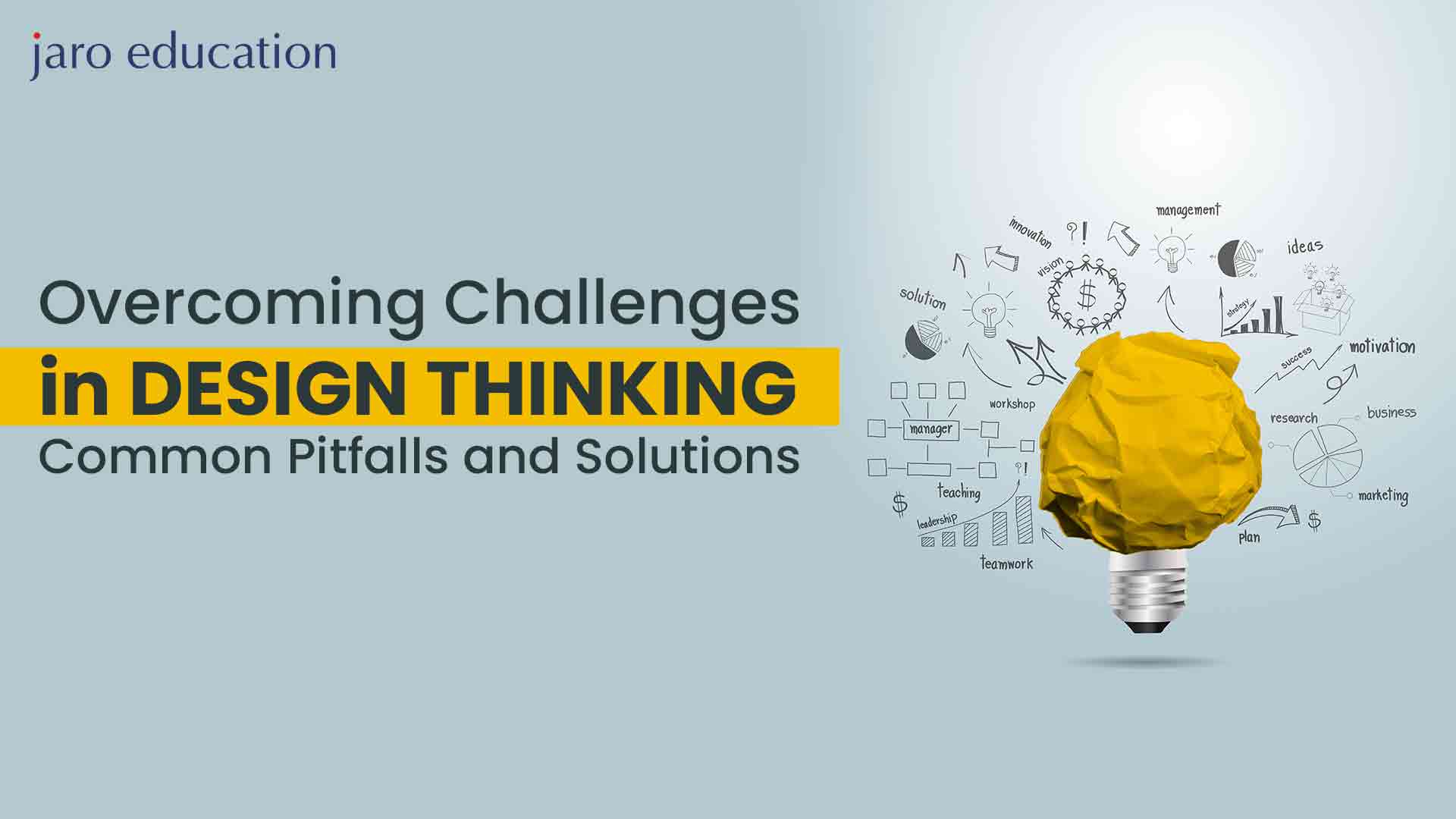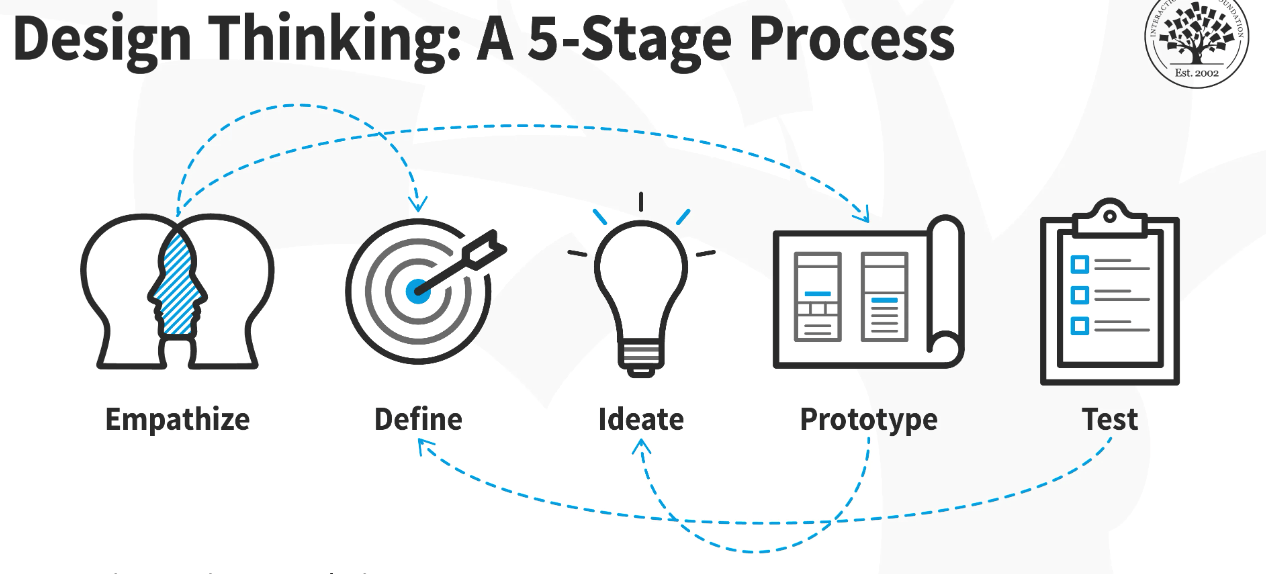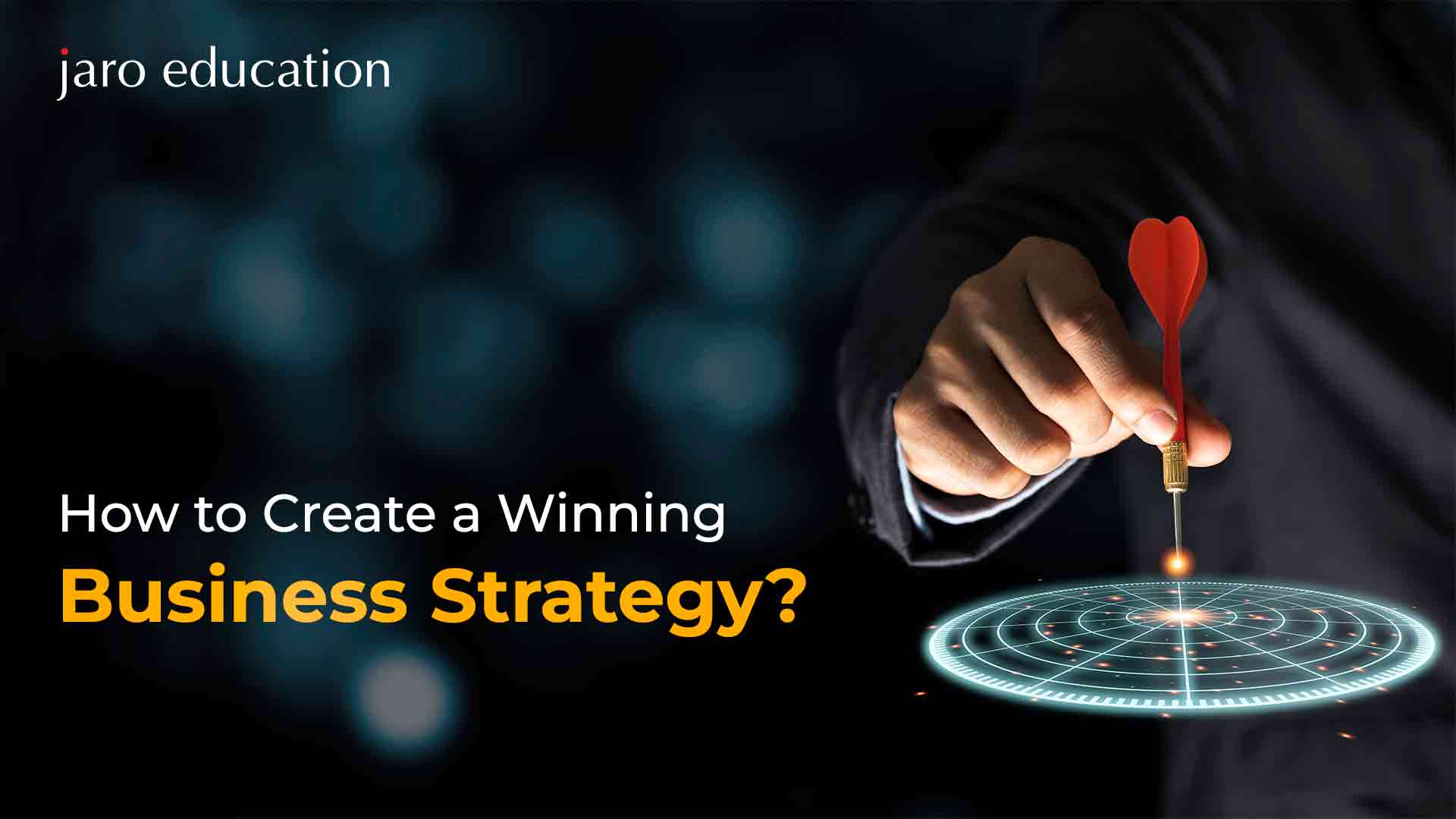
- jaro education
- 1, February 2024
- 10:51 am
Design thinking is viewed as a breakthrough in solving problems. Its people-oriented or human-focused approach advocates empathy, creativity, or iteration, which has made it popular. Nevertheless, like any paradigm, design thinking has specific complications. In this blog, we will delve into the common pitfalls faced when implementing design thinking and provide practical solutions to overcome them.
To conquer the challenges of the global market and elevate your career possibilities in design thinking, enroll on the Executive Programme in Product Innovation & Design Thinking for Business Growth at IIT Delhi. Get trained by top-notch industry experts at IIT Delhi, as well as practitioners, through live classes, hands-on activities, and real-world case studies, etc. and learn how to build and manage innovative products for enhanced business development through design thinking and management practices.
Understanding Design Thinking
Prior to discussing the challenges involved in design thinking and solutions to these challenges, a brief overview of the basic stages of design thinking is essential.
Design thinking process typically involves five key stages:
Table of Contents

*interaction-design.org
Empathise
You have to delve deep into the user’s world, discovering their needs by understanding existing problems. This is a crucial phase in developing empathy and comprehension.
Define
This step involves finding out the user’s needs and problems and aligning them with the organisation’s goals, ensuring that activities remain relevant and purposeful according to the objectives.
Ideate
Develop innovative strategies by promoting unrestricted creativity and brainstorming sessions. This entails “thinking out of the box” and generating unusual ideas.
Prototype
This stage enables quick testing and evaluation. It involves transforming ideas into product prototypes, which are focused on users’ needs.
Test
Gather user feedback on the effectiveness of your prototype and keep redefining your solution in response to customer needs and demands.
The Power of Design Thinking
Design thinking is an excellent way of developing creative and innovative solutions that will favour your organisation. It’s commonly claimed to be the key to improving customer experience, but its value extends to several domains such as healthcare, farming, building design, etc. It enhances the user-centric approach and encourages design thinking, experimentation, and iteration.
Common Design Thinking Challenges and Solutions
Design thinking is an effective problem-solving model focused on the users’ needs and experience. Nonetheless, while Design Thinking proves effective in addressing organisational challenges, it has a number of limitations or challenges when implemented. Let’s explore a few hurdles and complexities related to design thinking implementation with practical solutions to overcome them.
Insufficient User Research
Challenge
Empathy is an integral part of design thinking and requires well-defined user personas. It is hard to create innovative solutions if the personas developed are superficial or incorrect because they do not help in understanding user needs or ideating effective solutions.
Solution
Dedicate adequate time for every stage in the design thinking process. User personas have to be well-defined and robust. Perform rigorous research to make sure that your personas genuinely reflect your target audience. Remember, the goal is to know your users so intimately that you are able to anticipate their preferences.
Failure to Master the Process
Challenge
The adoption of a new process like design thinking can encounter some resistance in an organisation. Design thinking is not easy to master without the commitment of the entire team and appropriate training.
Solution
Ensure that you get a buy-in from every member of your team, emphasising a strong commitment. Hire a design-thinking professional to guide, encourage, and educate your team. Start by doing small projects and ask questions to enhance your skills. From the onset, it takes a lot of hard work to master design thinking.
Ideation and Experimentation Discouragement
Challenge
Ideation and testing are significant factors in design thinking. Teams may get demoralised if they get bogged down in the prototyping process or face repeated failures.
Solution
Choose an idea and design a clear pathway for prototype development and testing. Testing should be viewed as starting from scratch after each failure rather than acknowledging what went wrong in order to improve. Try to take a break if your team is not feeling discouraged with this prototype to provide fresh perspectives on it.
Viewing Design Thinking as a Linear Process
Challenge
Viewing Design Thinking as a linear process poses several challenges. First, it inhibits creativity by confining ideation within rigid stages. Second, the approach ignores the crucial element of iteration, hindering the refinement of ideas. Third, it limits the development of user empathy, as a linear process may not fully capture the evolving user experience..
Solution
Encourage constant improvement with feedback loops. With that, focus on users, diverse viewpoints, and flexible problem-solving. Furthermore, embrace creativity and collaboration. Accept ambiguity and adaptability for effective design thinking.
Attachment to Prototypes
Challenge
An aspect of the problem involves developing an attachment for a prototype that does not respond to user requirements appropriately. This may slow down development and hamper creativity.
Solution
Embrace the fact that it is an iterative process. A design Thinking-based approach shouldn’t involve an emotional attachment to a prototype that fails to satisfy user requirements. Note that if it does not benefit your users, then it doesn’t serve you.
Unpacking Design Thinking: A Cultural Perspective
Even though it comes with various benefits, integrating design thinking and innovation in organisations does not often go by smoothly. A cultural perspective may explain why this particular implementation faces complexities and friction.
Challenges Posed by Emotion, Time, and Centralization
Emotion
Design thinking and innovation foster an empathic connection with users; however, such an approach can be inappropriate for organisations based on a restraining culture where emotional expression is discouraged.
Time
Business operations tend to be characterised by speed, and they do not match well with design thinking since it involves taking a long time to conduct comprehensive research and idea generation. Its implication may be undermined by quick solutions and shortcuts.
Centralisation
Rule-breaking creates room for thinking, while design thinking is best suited to a decentralised and autonomous work culture. This is a challenge for organisations with authoritarian management systems, high levels of control, and rules.
Overcoming Cultural Mismatches
To deal with the resulting cultural problems, it is advisable to develop an intercultural archetype, which will focus on culturally motivated misunderstandings that may result in various conflicts. It is important to note that managers hold a key position within their firm, as a captain of a ship steers it in the right direction.
Bilingual Managers
Giving power to managers who understand both design and business realms is a strong proponent of design thinking in the organisation. Bilingual managers are able to relate design thinking to business purposes and promote its inclusion.
Microclimates
Scan your organisation and look for pockets where the success of design thinking can be envisaged. The emergent local microclimates provide viable opportunities for scaling up and building legitimacy within a larger business context.
Reassessing Current Systems and Policies
Review your policies and systems to help you determine which ones support values contrary to design thinking. Change existing design thinking principles to accommodate these values, either directly or indirectly.
Conclusion
Design Thinking is a potent tool to cultivate innovative solutions that improve consumer experience while tackling tough predicaments. It may, however, encounter numerous hurdles in its path. These issues impede organisations from reaping their full benefits and, therefore, require unique interventions. Organisations can traverse the complex terrain of design thinking by implementing cultural alignment, developing adaptability, and cultivating “bilingual managers”. It is important to understand that the journey is equally important in achieving a creative breakthrough; it’s not just about the destination.
If you want to ace as a professional in the field of design thinking, you should consider enrolling in Executive Programme in Product Innovation & Design Thinking for Business Growth at IIT Delhi. The programme empowers you with the competencies and knowledge you need to succeed in the ever-changing world of creativity and innovation that promotes business growth and staying ahead in a competitive global landscape.








